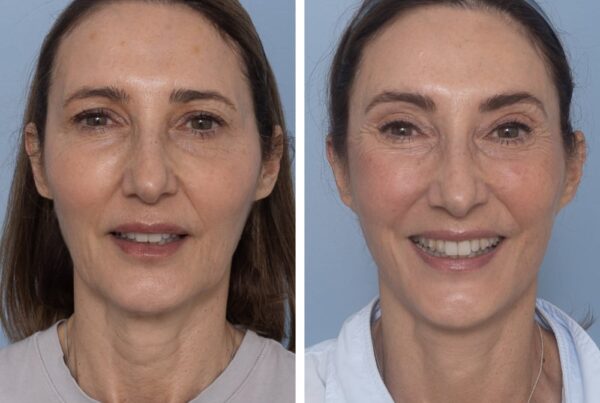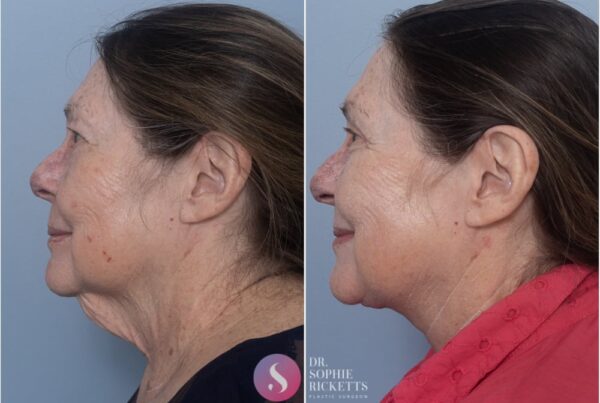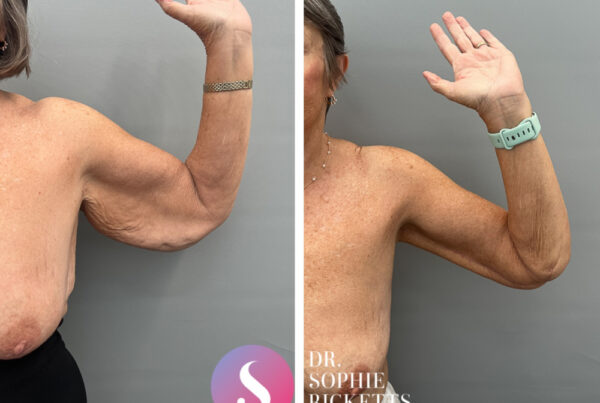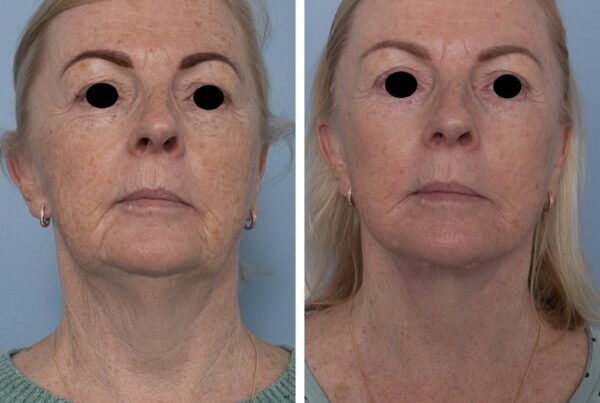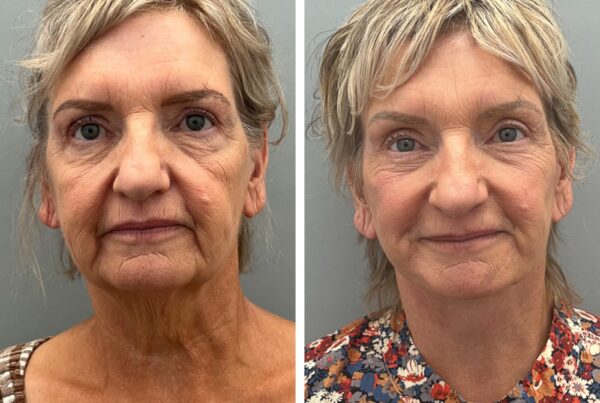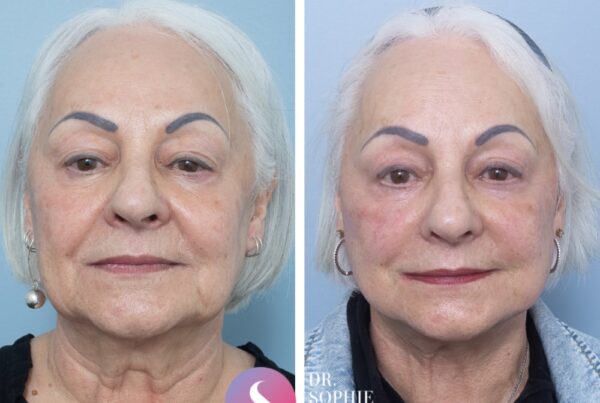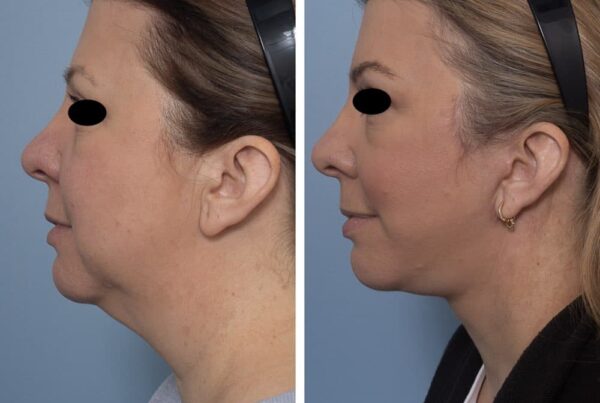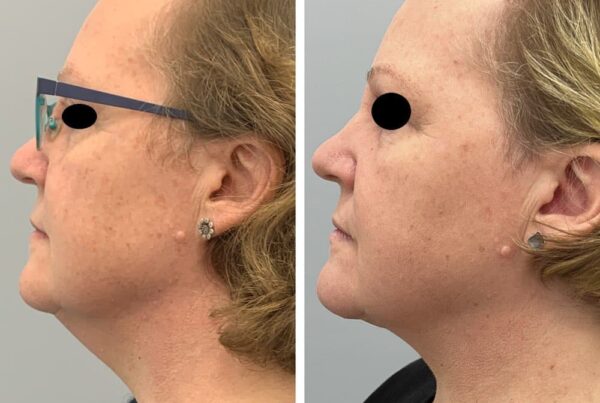Facelift Surgery
Why might a facelift be considered?
Changes in the skin, muscle, fat, and bone structure of the face can occur over time. These changes may include a reduction in soft tissue volume, decreased skin elasticity, and the effects of gravity. This can alter how the face looks in areas such as the cheeks, jawline, and around the mouth.
What does facelift surgery involve?
A facelift is a surgical procedure that repositions tissues of the face. Different surgical techniques may be used depending on the individual’s anatomy and clinical presentation. In some cases, a facelift is performed at the same time as another procedure, such as a neck lift or eyelid surgery.
Recovery
Recovery is different for each person. Swelling and bruising are common in the initial weeks and generally improve over time. It may take several months before the final outcome of surgery is evident. Dr Sophie will provide advice tailored to your situation.
Scarring
Facelift incisions are usually placed in front of or behind the ear, and in some cases extend into the hairline. All surgery results in scars, though they typically become less noticeable with time. The degree of scarring varies between individuals.
Duration of outcomes
The outcome of facelift surgery differs between individuals. Factors such as skin quality and surgical technique influence the result. Surgery does not stop further changes to the face over time, and outcomes cannot be guaranteed.
Neck Lift Surgery
Why might a neck lift surgery be considered?
The shape of the area under the chin and along the neck can be influenced by skin elasticity, muscle changes, and fat distribution. Some people may notice reduced definition in this region.
What does neck lift surgery involve?
A neck lift is a surgical procedure that may include removal of fat, tightening of muscles, and repositioning of skin in the neck area. In some cases, a neck lift may be performed during the same operation as a facelift.
Videos
FAQ
How do I know if a neck lift might be considered?
The appearance of the neck and area beneath the chin is influenced by genetics, skin quality, and fat distribution. Some people notice changes over time such as skin folds, prominence under the chin, or a lower position of tissues in this region.
Does neck lift surgery address wrinkles?
A neck lift is a surgical procedure that repositions skin and underlying tissues in the neck area. This may lead to some changes in the appearance of skin creases, but the procedure is not designed as a specific wrinkle treatment.
Other non-surgical options, such as injectable treatments, may be considered separately. During a consultation, Dr Ricketts, Specialist Plastic Surgeon, can discuss whether a neck lift or another treatment is more appropriate for your circumstances.
Who might consider a neck lift surgery?
Neck lift surgery may be discussed with individuals who are in general good health and who have concerns about changes in the neck area, such as loose skin or excess fat beneath the chin.
Suitability depends on factors including medical history, lifestyle factors such as smoking, and individual anatomy. In a consultation, Dr Sophie will discuss your individual circumstances, outline the potential risks and alternatives, and advise whether this procedure may be appropriate for you.
What does facelift surgery aim to do?
A facelift surgery is a surgical procedure that repositions facial tissues. It may change the way the cheeks, jawline, and areas around the mouth appear. The specific changes differ for each person and depend on factors such as anatomy, skin quality, and surgical technique.
As with all surgery, facelift surgeries carry potential risks and complications. The procedure is not suitable for everyone. In a consultation, Dr Sophie Ricketts will discuss your individual circumstances, outline the potential risks and alternatives, and advise whether this procedure may be appropriate for you.
What to expect right after a facelift?
After a facelift, it is normal to experience some swelling, bruising, and discomfort. Here are some of the things you can expect during the immediate recovery period:
- Bandages and dressings: You may have dressings covering the sides of your face and neck to protect the incisions and reduce swelling. These may be removed after a day or two.
- Swelling and bruising: Swelling and bruising are common after a facelift and may last for several weeks. Applying cold compresses to the affected areas can help reduce swelling and discomfort.
- Pain and discomfort: It is common to experience some pain and discomfort after a facelift. Most patients do not find the pain is severe, rather a feeling of tightness. You will be prescribed pain medication to help manage this.
- Drainage tubes: You may have small, soft drainage tubes placed near the incision sites to prevent fluid buildup. These are typically removed the day after your surgery.
- Follow-up appointments: You will have follow-up appointments with your surgeon to monitor your progress and remove any sutures that were used to close the incisions. The first appointment is usually about a week after surgery.
- Rest and recovery: It is important to rest and avoid strenuous activities for several weeks after a facelift to allow your body time to heal.
It’s important to follow your surgeon’s post-operative instructions carefully to ensure a smooth and successful recovery. If you experience any unusual symptoms or have any concerns, contact the practice and speak with our nurse or Dr Ricketts.
